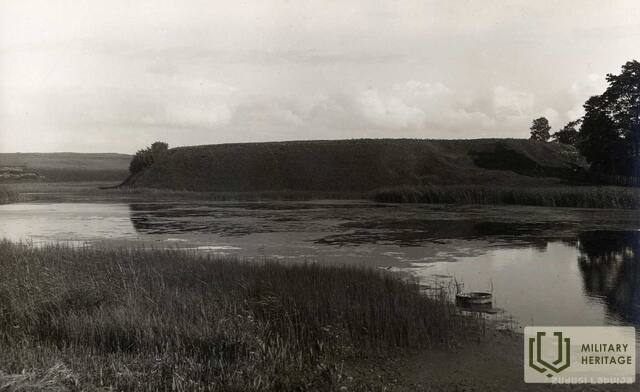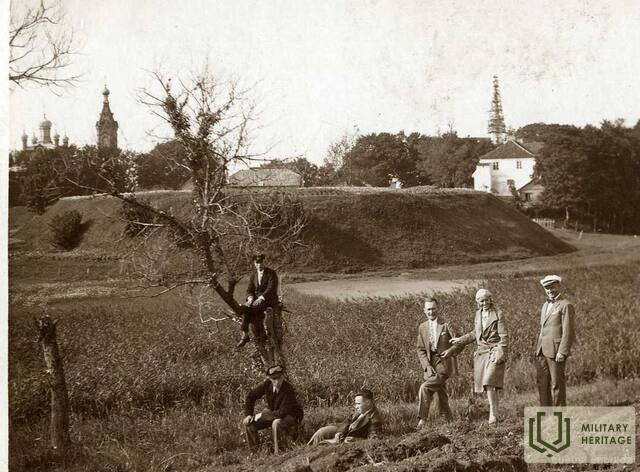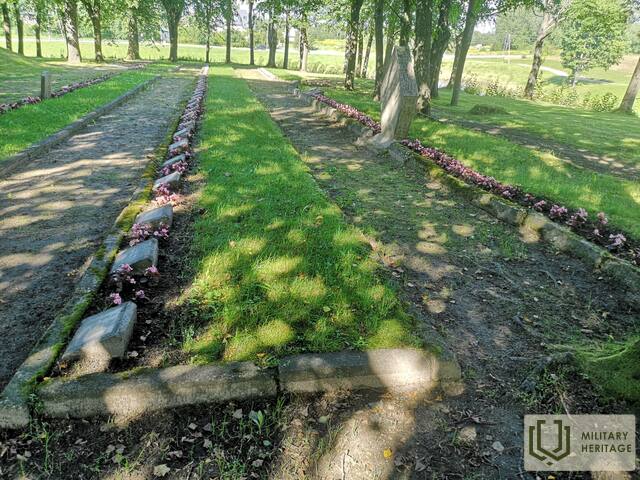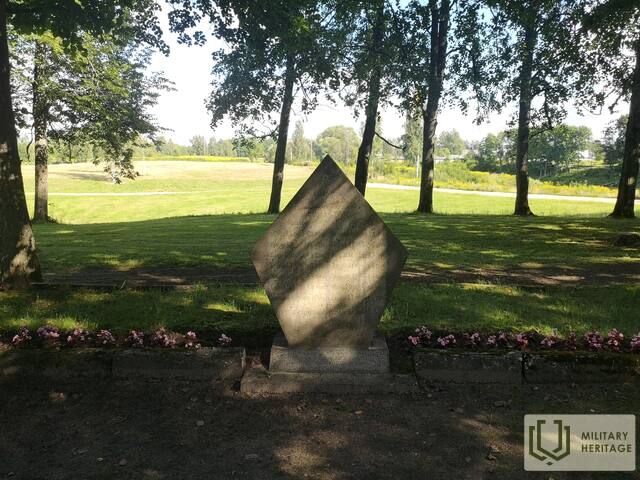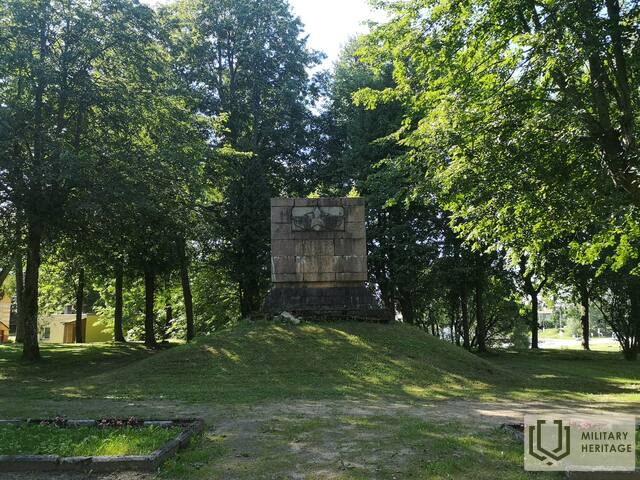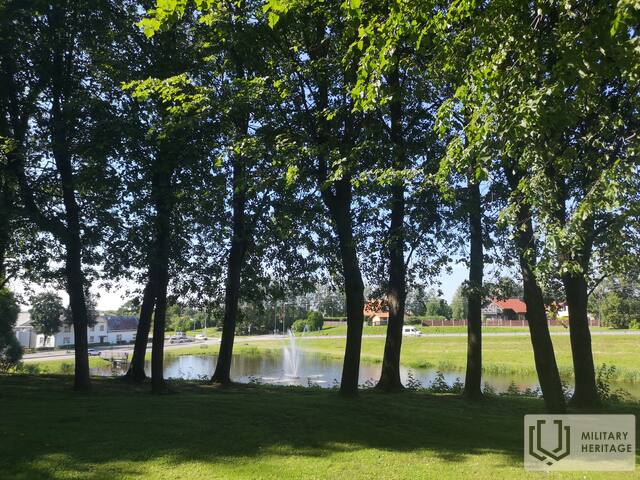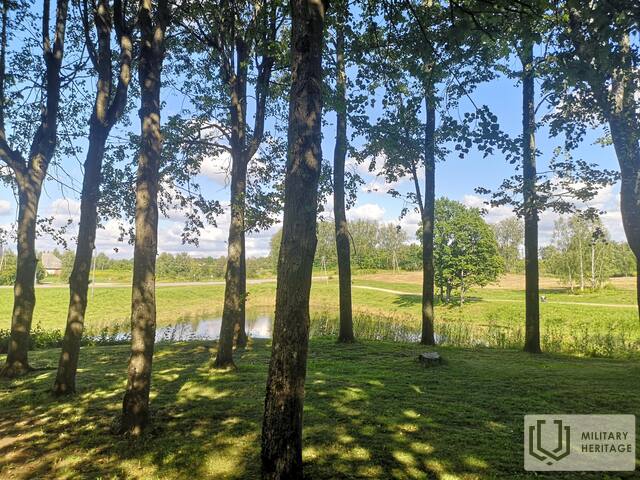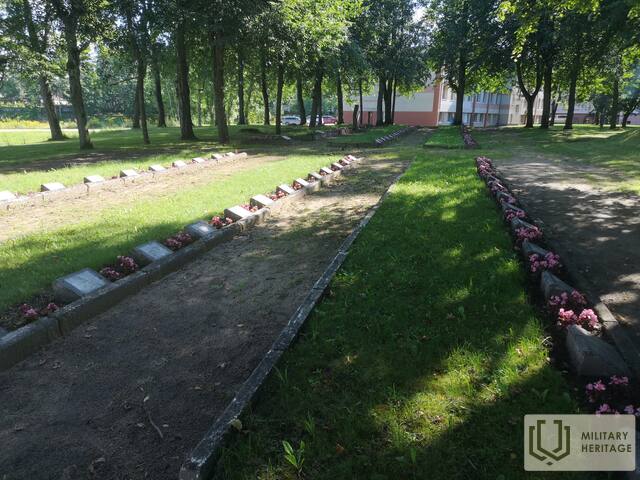Cemetery of Soviet soldiers killed in World War II in Ķezberkalns
Memorial site
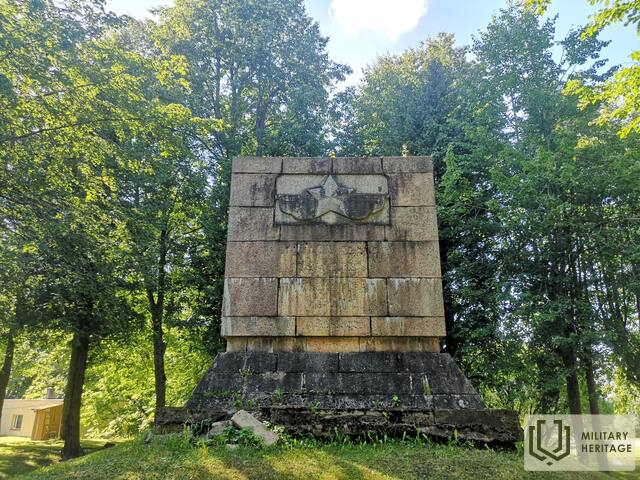

Located in Limbaži municipality, in Limbaži, on the Ķezberkalns castle mound.
Kezberkalns is a Livonian hillfort where, after World War II, the Soviet occupation regime established a cemetery for Red Army soldiers. 134 soldiers are buried there, most likely those who fell in the Limbaži area.
Most Red Army cemeteries were established after the war, when special groups of people carried out the reburial of soldiers' remains. It was difficult and very unpleasant work. Poor organization and low motivation led to a number of errors, for example, in the accounting of those reburied. Those responsible for maintaining the cemeteries were appointed. Most often, these were schools, collective farms and factories. The Ķezberkalns cemetery was to be taken care of by Limbaži educational institutions. The goal of Soviet propaganda was to penetrate all spheres of life. An integral part was the Russification of political, economic and cultural life, which was officially called "approaching the great Russian people" or "modernization". The occupation troops turned into "liberators", and Red Army cemeteries in city centers were part of the ideological infrastructure. The memory of soldiers became a theatrical performance and a means of political manipulation.
Today, you can visit the cemetery and the site of the ancient castle mound.
Used sources and references:
Latvian Occupation Museum Yearbook. Liberators as Conquerors. Riga: Latvian Occupation Museum Society. 2006.
Zaļkalns, A. The people do not forget. Soviet land (Limbaži), No. 136. 1960.




